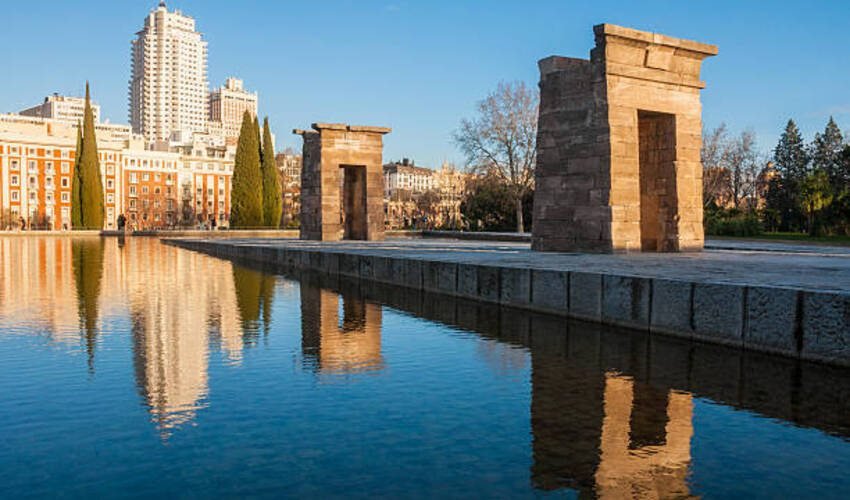Introduction
Of course, one would be in trouble trying to date such monuments in an orthodox way-the Temple of Debod provides a perfect specimen to study in history, conservation, and cross-cultural exchange. Set inside Parque del Oeste, close to Plaza de España, the temple acts as an almost unique opportunity for one to appreciate Egyptian heritage without actually travelling to Egypt.
Ancient Egypt
The temple was built in the southern part of Egypt, close to Aswan, in the 2nd century BC. It was dedicated to the worship of Amun and Isis at the commission of King Adikhalamani of Meroë. Subsequent rulers of the region, especially during Ptolemaic and Roman times, further decorated and enlarged the temple with new chapels and new reliefs. Temple construction involved not only religious purposes, keeping the deities of Amun and Isis alive in people’s minds, but also political ones, appreciating their very presence in establishing authority in the context of the region.
Journey to Spain
In the 1960s, Egypt championed a series of major international initiatives aimed at rescuing ancient monuments threatened with flooding following the building of the Aswan High Dam. As a mark of appreciation to countries that had made donations for this solidarity project, Egypt gave a few temples as charity to many countries. One of these temples went to Spain in 1968, and this is the Temple of Debod. The temple was basically cut, shipped piecewise, and rebuilt in Madrid in 1972, which began to serve the public.
Architectural and Layout Aspects
The medium of constructing stone seems to make the temple look heterogeneous. Any visitors coming to the temple would be greeted by a series of stone pylons. At the entrance, the original carvings are still there on the stone, along with some initiatory hieroglyphs depicting the Pharaoh’s offering sacrifices to the god. The construction of a reflecting pool has accentuated its beauty and driven home the memory of an ancient temple beside the Nile.
Cultural Significance in Madrid
The Temple of Debod has proven to be just as culturally a landmark for modern Madrid as it is an archaeological treasure. Placed in a picturesque park, it is now a crowded venue for tourists and locals alike to witness the sunset over a panoramic view of the Royal Palace and Almudena Cathedral. It symbolizes international cooperation whereby everyone gets to remind others that the preservation of world heritage is paramount.
Conclusion
This Temple of Debod is awakening inter-civilizational dialogue: the gift from Ancient Egypt, which really came alive in its new setting in Spain. Merging in the cradle of history, architecture, and cultural thought, it adds to Madrid’s very identity while paying homage to Egypt’s ancient glory. The Temple is a must-see feature for any visitor to Spain’s capital; it brings the past and present into one exceptional monument.
Read Dive is a leading technology blog focusing on different domains like Blockchain, AI, Chatbot, Fintech, Health Tech, Software Development and Testing. For guest blogging, please feel free to contact at readdive@gmail.com.





